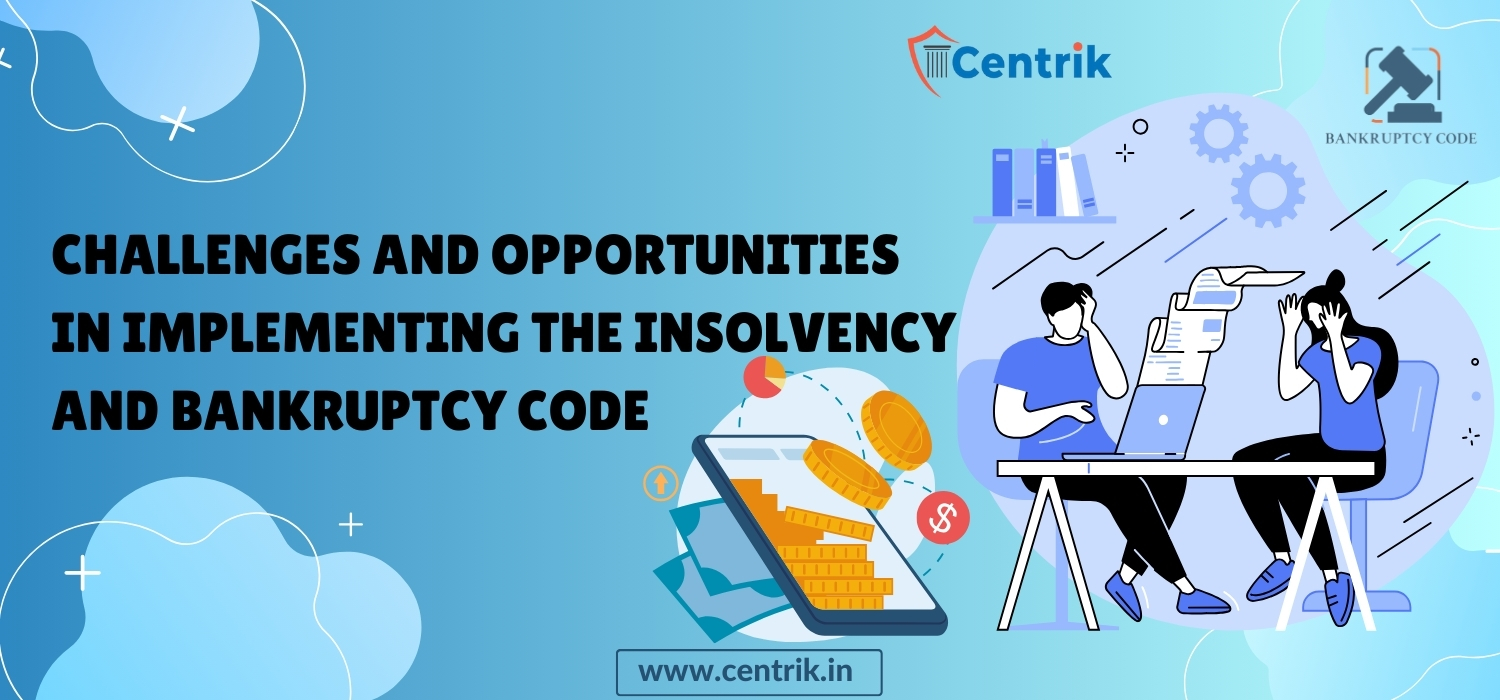The Insolvency and Bankruptcy Code (for short “I&B Code”) introduced in India in 2016 represents a landmark reform aimed at addressing the longstanding issues in the resolution of distressed assets and promoting a more efficient insolvency framework. While the I&B Code has brought about significant improvements in the resolution process, its implementation has encountered various challenges and opportunities that shape its impact on the Indian economy.

Challenges:
- Legal Complexity and Interpretation: The I&B Code is a comprehensive legislation, but its implementation involves navigating complex legal interpretations and addressing ambiguities. Courts have been instrumental in interpreting provisions, which has led to delays and uncertainties in the resolution process.
- Operational Delays and Backlog: One of the critical challenges faced in implementing the I&B Code is the operational delays and backlog of cases. The infrastructure for handling insolvency proceedings, including the National Company Law Tribunal (NCLT) and the Insolvency and Bankruptcy Board of India (IBBI), has faced capacity constraints, leading to delays in resolving cases.
- Lack of Precedents and Case Law: Given the relatively recent introduction of the I&B Code, there is a scarcity of precedents and established case law. This has resulted in varied interpretations of the law and inconsistent outcomes in different cases, affecting the predictability and reliability of the resolution process.
- Stakeholder Coordination and Cooperation: Effective resolution under the I&B Code requires cooperation among various stakeholders, including creditors, debtors, resolution professionals, and regulatory authorities. Coordination challenges among these stakeholders can hinder the timely resolution of insolvency cases.
- Financial Sector Readiness: The effectiveness of the I&B Code is closely linked to the readiness and capacity of the financial sector to participate in the resolution process. Building capabilities among lenders and financial institutions to assess distressed assets and engage in restructuring efforts remains a challenge.
Opportunities:
- Promoting a Culture of Corporate Discipline: The I&B Code has instilled a sense of corporate discipline by emphasizing the timely resolution of financial distress. Companies are incentivized to resolve their financial issues promptly to avoid stringent consequences under the insolvency process.
- Enhancing Credit Availability: A robust insolvency framework improves credit availability by reducing the risk perception among lenders. Clearer resolution mechanisms under the I&B Code encourage creditors to extend credit with greater confidence, supporting economic growth and investment.
- Encouraging Entrepreneurship and Innovation: The I&B Code provides a structured exit mechanism for failed businesses, allowing entrepreneurs to learn from failures and explore new opportunities. It promotes a dynamic business environment where innovation and risk-taking are essential components of economic growth.
- Attracting Investment and Enhancing Market Confidence: A transparent and efficient insolvency framework attracts domestic and foreign investments by providing clarity and predictability in resolving distressed assets. This enhances market confidence and strengthens India’s position as an attractive investment destination.
- Policy Reforms and Continuous Improvement: Recognizing the challenges faced in implementation, policymakers have been proactive in introducing reforms to streamline procedures and address operational bottlenecks. Continuous improvement in the regulatory framework and infrastructure can further enhance the effectiveness of the I&B Code.
Conclusion:
The Insolvency and Bankruptcy Code represents a paradigm shift in India’s approach to resolving financial distress and revitalizing businesses. While challenges such as legal complexity, operational delays, and stakeholder coordination persist, the I&B Code also presents significant opportunities for promoting corporate discipline, enhancing credit availability, and attracting investment. As implementation evolves and reforms are introduced, ensuring a balanced approach to addressing challenges while leveraging opportunities will be crucial in realizing the full potential of the I&B Code and supporting sustainable economic growth.




 join For Updates
join For Updates